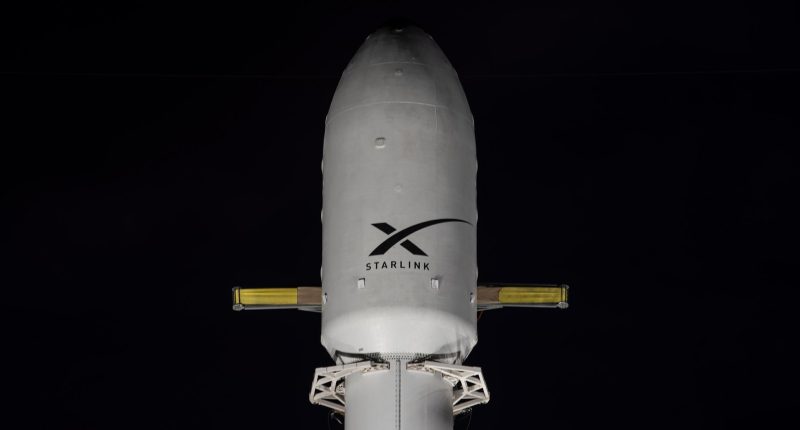SpaceX’s Falcon 9 rocket experienced a rare failure on Thursday evening during a routine launch of Starlink internet satellites. The mission, which aimed to deploy 20 Starlink satellites into orbit, was marred by an error in the rocket’s second stage, resulting in the satellites being placed in an incorrect orbit.
The Falcon 9 rocket took off from California’s Vandenberg Space Force Base at 7:35 PM PST. The initial phase of the mission proceeded smoothly, with the first-stage booster successfully detaching and landing back on a sea-faring platform. However, the second stage, which is designed to power the satellites to their final orbit, encountered a significant problem. An unusual buildup of ice was observed on the top of the Merlin Vacuum engine, with large clumps falling away into the engine’s exhaust plume. This suggested a potential leak of the liquid oxygen, a key component of the engine’s propellant.
As the rocket ascended, the second stage’s Merlin Vacuum engine failed to reignite for its second and final burn. This failure resulted in what SpaceX CEO Elon Musk termed a “RUD” – Rapid Unscheduled Disassembly, essentially a catastrophic explosion. Musk elaborated on his platform X, stating, “Upper stage restart to raise perigee resulted in an engine RUD for reasons currently unknown. Team is reviewing data tonight to understand root cause. Starlink satellites were deployed, but the perigee may be too low for them to raise orbit. Will know more in a few hours.”
Upper stage restart to raise perigee resulted in an engine RUD for reasons currently unknown. Team is reviewing data tonight to understand root cause.
Starlink satellites were deployed, but the perigee may be too low for them to raise orbit. Will know more in a few hours.
— Elon Musk (@elonmusk) July 12, 2024
Despite the engine failure, the 20 Starlink satellites were deployed. However, they were placed into a lower-than-intended orbit. This raised concerns about whether the satellites’ onboard propulsion could move them quickly enough to escape the pull of Earth’s atmosphere. SpaceX later confirmed contact with five of the satellites and is attempting to raise their orbits using their onboard ion thrusters. Musk humorously remarked, “Unlike a Star Trek episode, this will probably not work, but it’s worth a shot.” The Federal Aviation Administration (FAA) acknowledged the anomaly and is requiring an investigation. An FAA spokesperson stated, “The incident involved the failure of the upper stage rocket while it was in space. No public injuries or public property damage have been reported.”
This incident marks the first major failure for a Falcon 9 rocket in nearly a decade. The Falcon 9 has an impressive track record, with 335 consecutive successful launches across the company’s Falcon family of rockets, including the more powerful Falcon Heavy. The last significant error occurred in 2016 when a rocket exploded on the pad during pre-launch testing. The last in-flight failure was in 2015, when the Falcon 9’s upper stage disintegrated shortly after lift-off.
This failure could affect two critical upcoming missions. The Polaris Dawn private spaceflight mission, funded by billionaire Jared Isaacman, is scheduled for the end of the month, and a NASA astronaut transportation mission is planned for mid-August. SpaceX’s Falcon 9 plays a crucial role in NASA’s human spaceflight program, and any delay in its operations could impact these missions.
The Tech Portal is published by Blue Box Media Private Limited. Our investors have no influence over our reporting. Read our full Ownership and Funding Disclosure →






